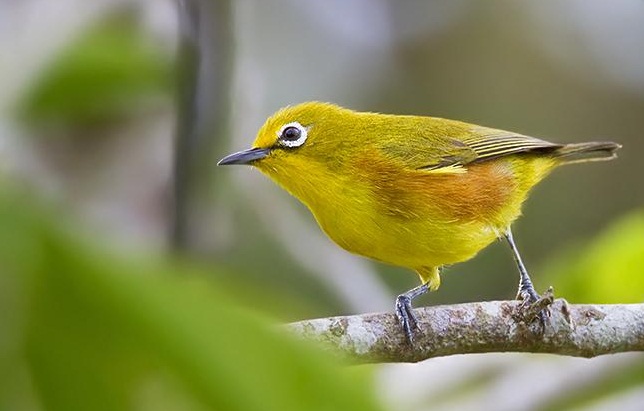The Fiji White-eye: A Closer Look At Zosterops Explorator
Share
The Fiji White-eye, scientifically known as Zosterops explorator, is a captivating bird species belonging to the family Zosteropidae within the order Passeriformes. This small, lively bird is endemic to the beautiful islands of Fiji, where it plays a vital role in the local ecosystem. In this article, we will explore the taxonomy, physical characteristics, habitat, diet, behavior, reproduction, and conservation status of this intriguing species.

Taxonomy
The Fiji White-eye was first described by Layard in 1875 in the Proceedings of the Zoological Society of London. It belongs to the suborder Oscines, which includes many songbirds known for their complex vocalizations. The species is part of the Zosteropidae family, commonly referred to as white-eyes, which are characterized by their distinctive eye rings.
Physical Characteristics
The Fiji White-eye is a small bird, measuring approximately 10 to 12 centimeters in length. It has a rounded body, short wings, and a relatively short tail. The plumage is predominantly olive-green, with a striking white eye ring that gives the bird its common name. The underparts are lighter, often appearing yellowish. Males and females exhibit similar coloration, making it challenging to distinguish between the sexes without close observation.

Habitat
Zosterops explorator is primarily found in the lush forests of Fiji, including the islands of Kandavu, Ovalau, Viti Levu, Vanua Levu, and Taviuni. These birds thrive in subtropical or tropical moist lowland forests and can often be spotted in gardens and plantations. They prefer areas with dense foliage, which provides ample cover and foraging opportunities.
Diet
The diet of the Fiji White-eye mainly consists of fruits, nectar, and insects. They are known to feed on the nectar of various flowering plants, playing a crucial role in pollination. Their foraging behavior often involves flitting from branch to branch, using their agile movements to access food sources. This diet not only sustains them but also contributes to the health of their ecosystem by aiding in plant reproduction.

Behavior
Fiji White-eyes are social birds, often seen in small flocks. They are known for their lively and energetic behavior, frequently engaging in playful interactions with one another. Their vocalizations are a series of high-pitched calls, which they use to communicate with their flock. These calls are particularly prominent during the breeding season when males may sing to attract females.
Reproduction
The breeding season for the Fiji White-eye typically occurs from September to December. During this time, males perform elaborate displays to attract females, showcasing their vibrant plumage and vocal abilities. The nest is usually built in dense foliage, providing protection from predators. The female lays a clutch of 2 to 4 eggs, which she incubates for about 12 to 14 days. Both parents participate in feeding the chicks once they hatch, ensuring their survival in the early stages of life.
Conservation Status
The Fiji White-eye is currently classified as Least Concern by the International Union for Conservation of Nature (IUCN). However, habitat loss due to deforestation and the introduction of invasive species pose significant threats to their populations. Conservation efforts are essential to protect their natural habitats and ensure the survival of this unique bird species.
Birdwatching Tips
For birdwatchers eager to observe the Fiji White-eye, the best locations are the forests and gardens of Fiji's main islands. Early morning is the ideal time for birdwatching, as the birds are most active during this period. Patience and quiet observation are key, as these birds can be elusive. Binoculars will enhance the experience, allowing for a closer look at their charming behaviors and vibrant plumage.

The Fiji White-eye, with its delightful presence and ecological significance, is a testament to the rich biodiversity of the Fijian islands. Observing this species not only provides joy to birdwatchers but also highlights the importance of conservation efforts in preserving the unique wildlife of Fiji. As we continue to appreciate and protect these remarkable birds, we ensure that future generations can also enjoy their beauty and contributions to the ecosystem.
